-
Posts
1,278 -
Joined
-
Last visited
-
Days Won
20
Content Type
Profiles
Forums
Blogs
Gallery
Events
Store
Posts posted by Komtur
-
-
In between I got the hint of the Greek Wikipedia biografie of Ioannis Metaxas. In the second part of his biographie about his military career there is mentioned, that he got in 1913 that order!
Until now I can verify five of seven decoration on this bar for Metaxas (position 1, 2, 4, 5, 6).
On 5.9.2017 at 15:58, paja said:So far I wasn't able to find a single Greek recipient, unfortunately. If something pops up I'l let you know immediately.
Best of luck with the further research!Because of his activities for the military convention with Serbia I assume, Metaxas could have gotten a Serbian order after May 1913, when this convention was signed. Could this information be of use, to search again in your sources for a possible award of the Serbian White Eagle Order to Major or Lieutenant-Colonel Metaxas?
Many thanks in advance!
0 -
-
-
On 7.9.2017 at 07:26, Igor Ostapenko said:
... Order for Bravery - early Zimmermann production !
Lieutenant Colonel Johann Metaxas got this cross in the gold version according to a biografie of him in September 1914. Metaxas was at this time Chief of Operations at GHQ and the closest ally to King Constantine I. and the center figure of the Greek royalist party. BTW the king wore his medal bar at this time also in German Style

So Metaxas seems to be a quite hot candidate for my medal bar...
0 -
From 1903 on I found these Greek officers as recipients of the 3rd class Prussian Crown Order:
15.4.1904 Polyzòys, Kgl. griech. Korvettenkapitän
12.4.1905 Orphanidis, Kgl. griech. Hautpm. und Adjutant
12.4.1905 Valvis, Kgl. griech. Hauptm., Adjutant des Chefs der Gendarmerie
12.4.1905 Zymbrakakis, Kgl. griech. Hauptm. der Gendarmerie
12.4.1905 Spyracos, Kgl. griech. Hauptm. der Inf.
12.4.1905 Negrepontis, Kgl. griech. Hauptm. der Ingenieure
12.4.1905 Bouboulis, Kgl. griech. Kapitänleutnant
12.4.1905 Zochios, Kgl. griech. Kapitänleutnant
15.9.1905 Hatzanestis, Kgl. griech. Hautpmann im Generalstabe
27.4.1908 Troupaki, Nikola, Kgl. griech. Hauptm. In der Gendarmerie
27.4.1908 Bellini, Nikolas, Kgl. griech. Kapitänleutnant
27.4.1908 Paparigopoulo, Etienne, Kgl. griech. Kapitänleutnant
27.4.1908 Andreadis, Anastasios, Kgl. griech. Kapitänleutnant
3.5.1909 Levidis, Constantin, Kgl. griech. Hauptm. der Art., Flügeladjut. des Kronprinzen
3.5.1909 Skouffos, Georges, Kgl. griech. Hauptm. vom Genie, Adjut. des Kronprinzen
24.4.1911 Mantzagriotakis Jatrou, Constantin, Kgl. griech. Gend. Major Polizeidirektor in Corfu
2.5.1912 Metaxas, Johann, Kgl. griech. Hauptm., Adjut. des Kriegsministers
3.9.1913 Krièzi, A. Kgl. griech. Kapitänleutnant
10.9.1914 Saliotis, Kgl. griech. Hauptmann im Kriegsministerium
13.11.1914 Lévidis, N. Kgl. griech. Major der Kavallerie
The red marked persons IMHO would be suspects for a Godet-mounted bar made in Berlin. Captain Johann Metaxas was in May 1913 responsible for the military convention between Greece and Serbia. This could be a reason for receiving a Serbian decoration. Besides this he had a close relation to Crown Prince Constantine and especially to his wife Princess Sophie of Prussia.
0 -
-
7 hours ago, paja said:
So far I wasn't able to find a single Greek recipient, unfortunately. If something pops up I'l let you know immediately. ...
Many thanks for trying!
I am still working on the Greek recipients of the 3rd class of the Prussian Crown Order. As far, as I can estimate, there will be about 30 candidates. Therefore I need another source to fix it to one person.
0 -
4 hours ago, paja said:
I think Serbian White Eagle Order was made by G. A. Scheid. Looks like 2nd type (year 1882 on reverse) which would put in a 1904-1914 period. I'll try to find Greek recipients in the Official Gazette and newspapers from that era, maybe we'll get lucky.
You are right
 (See picture of reverse).
(See picture of reverse).
There must be a relation to King Konstantin I. of Greece, who was married with Sophie of Prussia, a sister of Wilhelm II, in 1889. Konstantin became king in 1913, unfortunately there is a long period of possible occasions for exchanging decorations, like reciprocal family visits.
It would be very kind, if you could look for Greek military recipients of the Serbian White Eagle Order.
In between I will look for these persons with a Crown Order 3rd class in the Prussian Order Lists, to double check your findings.
BTW the medal bar was arranged by the German company J. Godet & Sohn, Berlin.
Thanks in advance!
0 -
5 hours ago, Paul C said:
If you could get an approximate date of when the PCO was awarded to the officer then a look through the Ordens Almanac should turn up some prospects.
Thanks Paul, but I don´t think that will work. The Ordens Almanach (latest edition 1908/9) mostly listed German recipients. Additionaly it is more likely, that the Crown Order is of later date. The Greek medals are for the wars against Turkey 1912/13 and Bulgaria 1913
0 -
For some years I have a medal bar with matching miniature chain in my collection, belonging to a greek officer from the early 20th century. I wonder, if there is a way to attribute this bar to a single person. Are there sources to be found, like greek order lists or rank lists?
Any help is appreciated!
Komtur.
0 -
-
-
-
On 10.6.2017 at 03:00, scottplen said:
Ok thanks !! I would love to see a picture of someone with both of the awards !
Unfortunately Clemens Frhr. v. Schorlemer-Lieser (Landwirtschaftsminister) decided not to rearrange his prewar medal bar with his Iron Cross 2nd class on white ribbon, but was wearing his 1st class.
0 -
Looks like the GODET version.
0 -
5 hours ago, scottplen said:
The typical and correct combination of a medical officer (Sanitätsoffizier). Before 1868 the military medicals were military officials. Therfore they got the noncombatand versions of the campaign medals in 1848, 1864 and 1866. In 1868 in Prussia the "Sanitätsoffizierskorps" was created. Afterwards the military medics count as officers. In the war of 1871 per statutes they were awarded the Iron Cross on the white ribbon, but they ALWAYS got in 1871 the combatand campaign medal. So a bid odd is the combatand medal for 1864 on this bar. But this is not impossible. The later medical officers had to serve in a basic military training. In this part of their education they had normal men ranks and therefore count as combatands. So it may be, the person we are talking about was in that initial stage of his qualification in the war against Denmark.
1 -
-
6 hours ago, Wild Card said:
If I am not mistaken, on that Mecklenburg bar (post #80), I see a pre 1908 Red Eagle medal on the Hohenzollern ribbon in there. Any idea as to what this was awarded for? ...
The medal was given with the Hohenzollern ribbon only once. On the occasion of release of the Stabswache des Großen Hauptquartiers (Guard of the Great Headquarter) on April the 29th 1871 all men and officers of the Stabswache received the Red Eagle Medal on this ribbon. In July 1870 the Infanterie-Stabswache was formed from men of the Lehr-Infanterie-Bataillon and the Kavallerie-Stabswache from troops of the Militär-Reit-Institut. The Lehr-Infanterie-Bataillon, affiliated to the 1. Garde-Regiment zu Fuß, was established in 1819 to improve the equability of service and training in the Prussian regiments. Every year the regiments had to send a few men and NCO to this training unit. From 1868 on the contingents of the German states, belonging to the Norddeutscher Bund (North German League) also sent men to the Lehr-Infanterie-Bataillon. Therefore we find medal bars of Prussians, but also of persons from other states of the Norddeutscher Bund, such as Mecklenburger or Saxon with the Red Eagle Medal on the Hohenzollern ribbon. The authorised strength of the Lehr-Infanterie-Bataillon in July 1870 was 656 men and NCO. Half of these formed the Infanterie-Stabswache, the other half were sent back to there units. So we can estimate, that about 330 infanterymen got this special combination. Even if it is not clear, how many cavalryman from the Militär-Reit-Institut were used to form the Kavallerie-Stabswache, we can assume, that altogether not more then about 500 Red Eagle Medals on the Hohenzollern ribbon were awarded.
Regards, Komtur.
1 -
-
-
-
58 minutes ago, scottplen said:
So the Baden Order most likely pre war ? Would it be a military award or to a civilian ? Could it have been Police or medical or any type of civil servant ? also possible Army ?
so pretty uncommon awarded after 1914
1. It is awarded for service in the war zone with swords. For any other merit before AND after 1914 without swords. So I (!) could not say, if it is handed out before or after 1914. With detailed pictures of the order some Baden specialists could give an indication when it was made by the maker or style. If the golden parts are gilded silver (as it seems for the oak leaves), the order should be made after 1910.
2. So it could have been given to a miliary person AND a civil one.
3. Civil servant is the most likely owner, Police and any medic is possible, but unlikely.
4. See 1. and 2.
5. Not uncommon, but most of the awarded decorations after 1914 were given with swords.
0 -
Numbers awarded 1866 to 1918: 1.452. I can´t find a reason, why the order should be awarded after 1914.
The non combattant ribbon of the Iron Cross in World War 1 is typical for the person I mentioned above. It is not impossible, that civil doctors or kind of male nurses got on. But they represent only a small part of the people, awarded with this decoration. Therfore it is for me unlikely, that somebody from the medical field was the owner of this bar, even if it can´t be excluded.
0 -
Nice one!
He was most likely a kind of civil servant or/and active in public welfare.
0





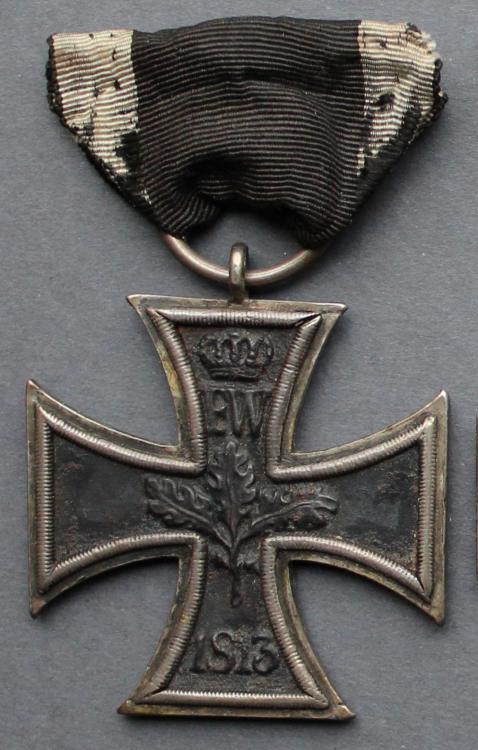

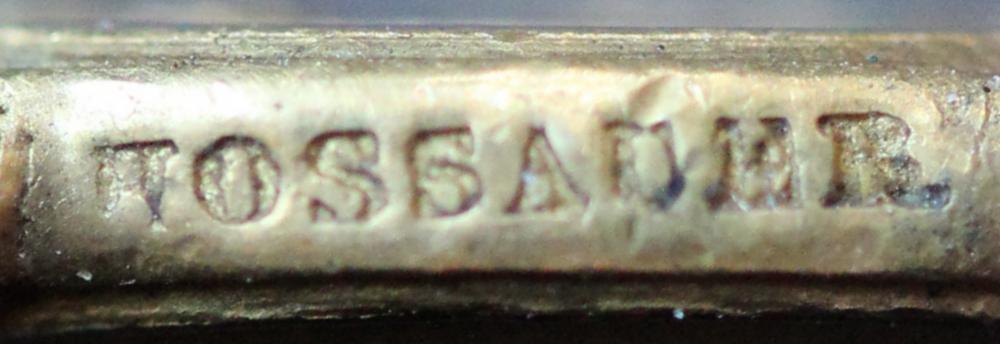

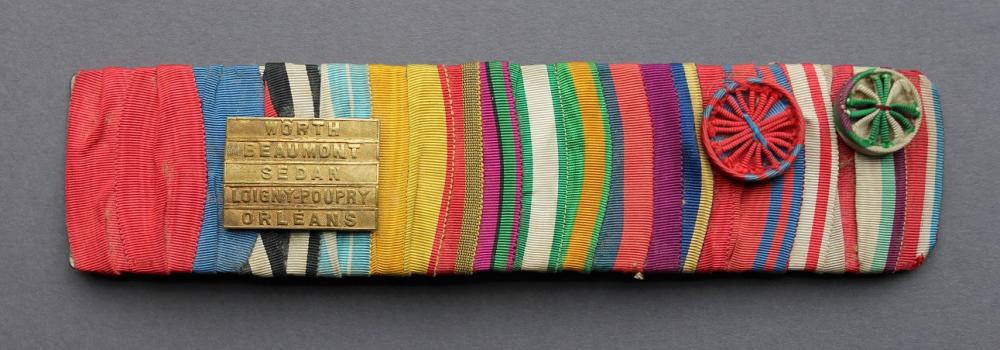
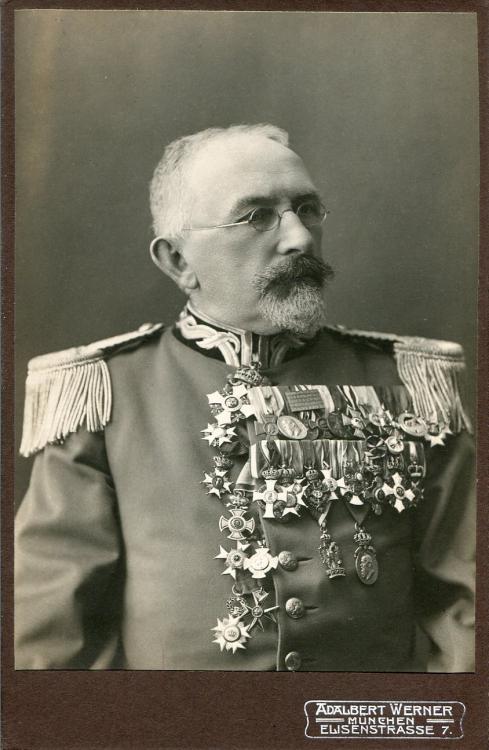
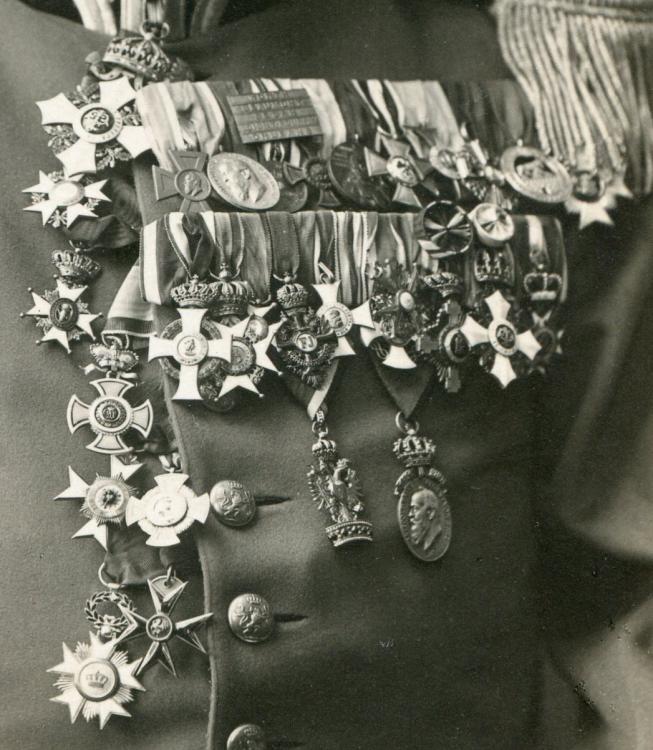
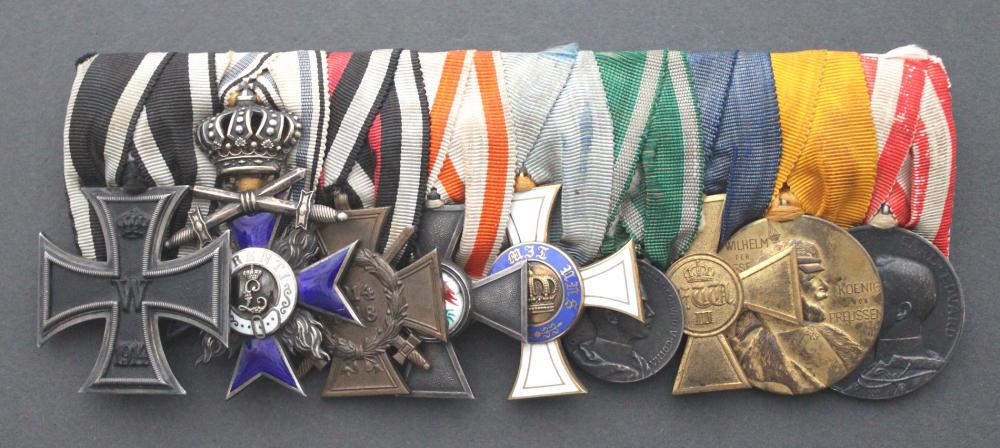
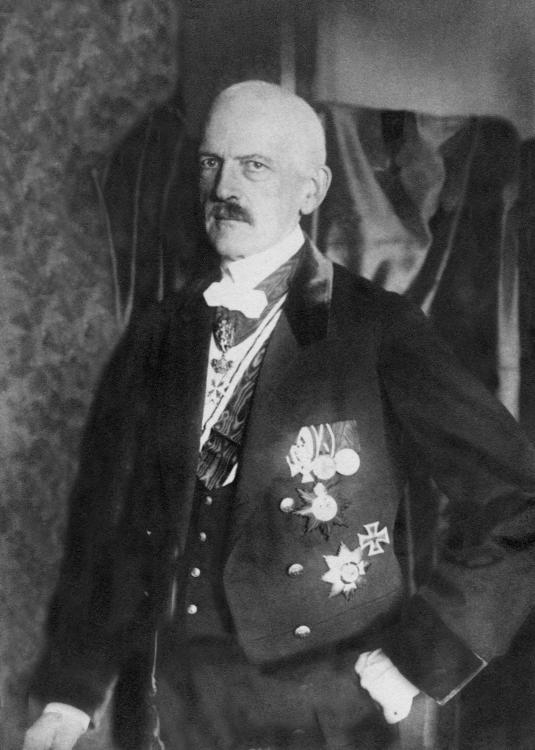
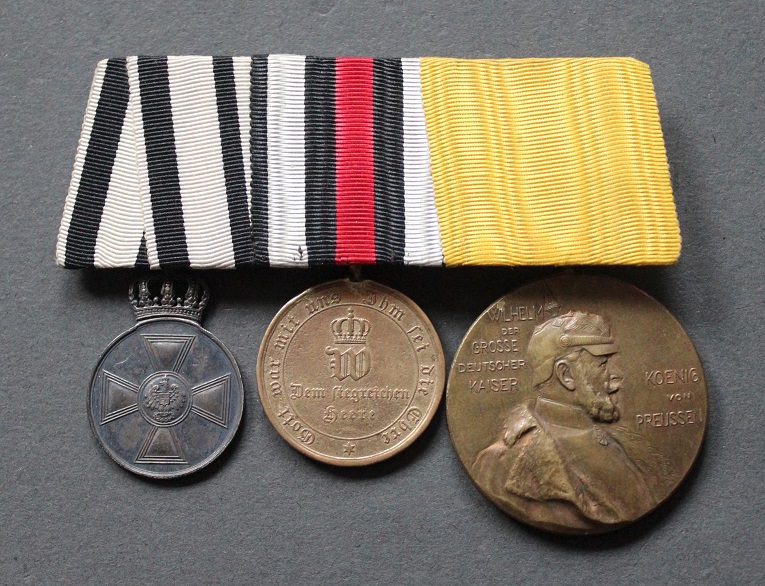
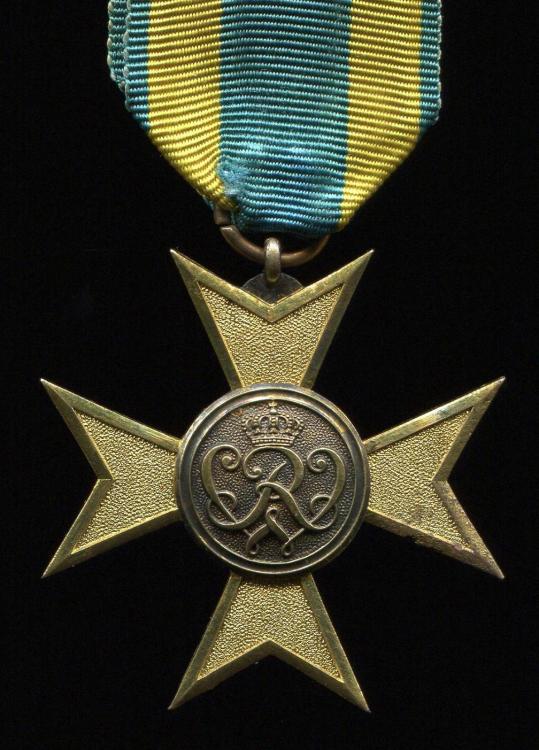

Medal Bar of a Greek Officer
in Southern European & Balkan States
Posted
Thanks for that substantial comment to the available sources about recipients of Serbian decorations. So we are missing Serbian periodicals, like staats almanacs, court calendars or order lists. So it seems to be really hard to find especially foreign persons among the recipients.
In the past I often successfull researched medal bars or decorated persons on portrait fotographs of my own collection and for other collectors too. Therefore I know the expenditure of time one need for this kind of work. Thats the reason I really appreciate your help .
.